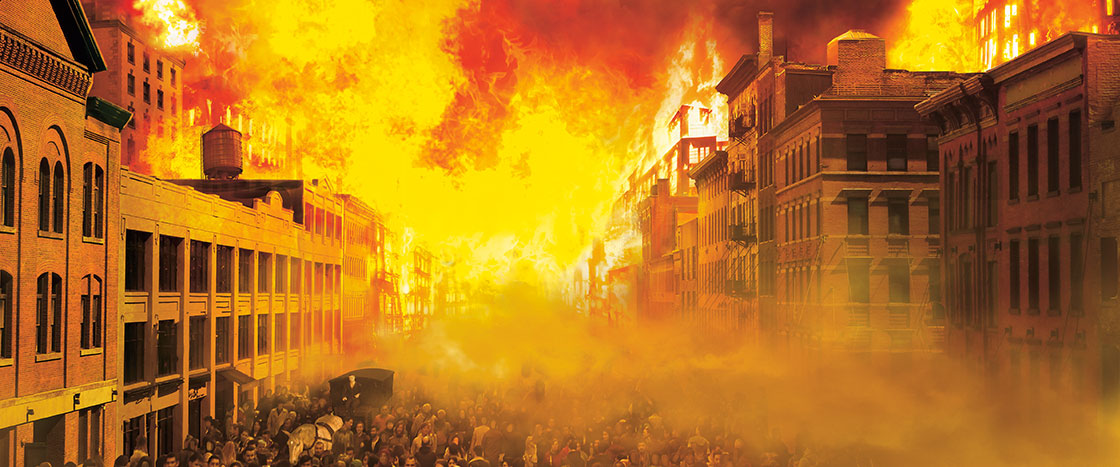Thirteen-year-old Bessie Bradwell staggered through Chicago’s burning streets. Flames shot hundreds of feet into the air. Glowing embers and hunks of burning wood rained down.
It was October 8, 1871, and the city of Chicago, Illinois, was on fire. Already, hundreds of buildings had burned to the ground. Thousands of people filled the streets, their screams rising over the fire’s monstrous crackling roar.
Worst of all, Bessie had lost track of her parents and brother. Soon, much of Chicago would be turned to ash. And Bessie was on her own.
Thirteen-year-old Bessie Bradwell staggered through Chicago’s burning streets. Flames shot hundreds of feet into the air. Glowing embers and pieces of burning wood rained down.
It was October 8, 1871. The city of Chicago, Illinois, was on fire. Hundreds of buildings had already burned to the ground. Thousands of people filled the streets. Their screams rose over the fire’s huge crackling roar.
Worst of all, Bessie had lost track of her parents and brother. Soon, much of Chicago would turn to ash. And Bessie was on her own.

